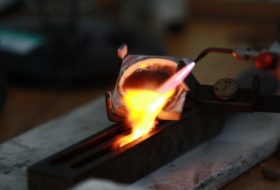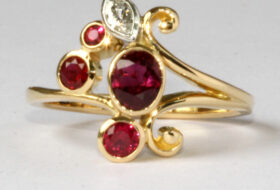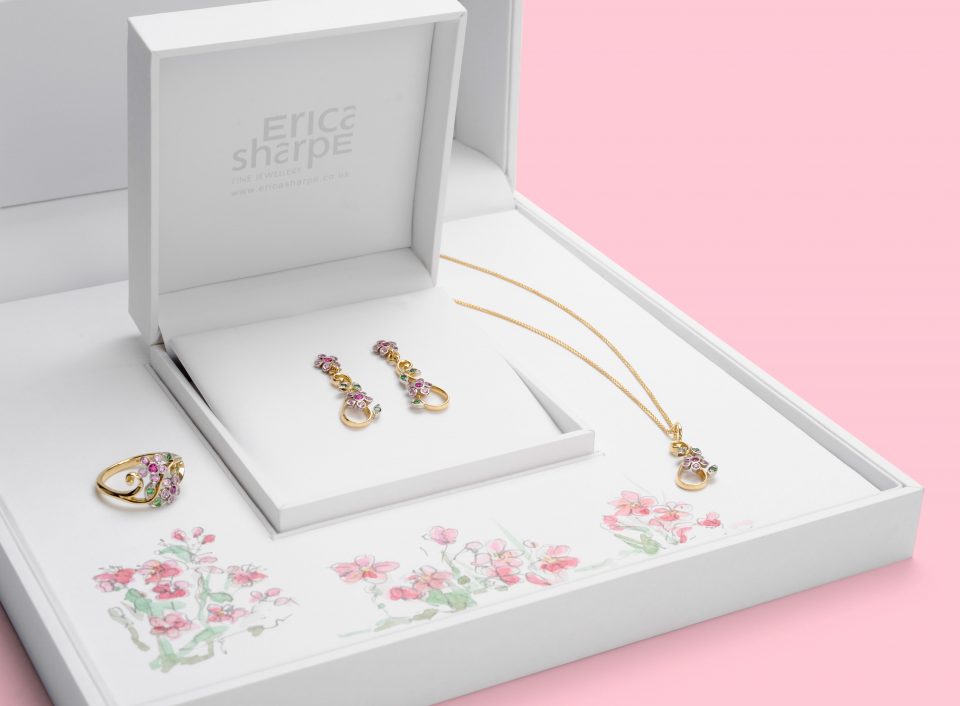It’s my favourite time of the year! The cow parsley is in flower and our lanes bubble with its flowery froth. Everything in the springtime is bursting with energy and the promise of warmer and fruitful days ahead gives me a sense of optimism and things to look forward to. Emerald is one of the most beautiful and rare gemstones a jeweller can have the pleasure to work with. It does, however, does guarantee an instantly raised anxiety level when it appears in the workshop. The stone is inherently brittle, and very often contains small inherent fractures and fissures. Because of this brittle nature, a specific way of facing has been developed and named after it – the Emerald Cut. To avoid very pointed angles the stones are often facetted with an octagonal shape. They are also carved, given a smooth ‘cabochon’ cut, or facetted into round or oval stones.
Emerald can be set effectively in yellow or white precious metals, but with spring inspiration, I find that I reach for the white metals more frequently at the bench. There are several precious metals that are white, and they can be easily confused. Confuse them at your peril, however, as although they look very similar, they have very different working properties, and values! Silver is the most commonly seen precious metal, especially on lower cost jewellery. It really is the most beautiful white metal, and technically is the whitest metal in the periodic table. It does, however, have several drawbacks as far as jewellery making is concerned. One of them is its impressive heat conductivity. In other applications, such as science, this is an amazing quality, but when it comes to jewellery making, particularly repairs, it can be a huge nuisance. I often get presented with a broken silver ring and the words ‘This has broken and it just needs soldering’! And oh how I wish it was a case of ‘just soldering’!
For the ultimate fine high-end gems jewellery, platinum makes an appearance. This really is the Roll Royce of jewellery metals. It has been used in the trade for about 150 years, and is a very dense, white, and strong metal. Because of its straight is can be fashioned in to very fine details, and be very durable when it comes to hold gems in place. It is undoubtedly the best most durable metal to use for gemstones, but it is tricky. It has a very high melting point, so when soldering and welding, eye protection is needed. If you look at the metal when it is white hot you can easily damage the retina in your eyes. the welding mask is a law unto itself and takes some getting used to – when the metal is not warmed, it doesn’t glow and therefore you cant see anything through the mask! The mask is wonderful for scaring small children and dogs, playing spacemen and if a quiet moment is desired, you can clamp it down over your face and look very busy!
Unlike silver, which tarnishes to a dull black every time it is heated, Platinum remains untouched by the heating process. This allows pre-polishing of areas that would other wise be inaccessible once the whole prices of jewellery is soldered together. This factor adds to the general high quality finish and finesse that is able to be discerned when seeing, wearing and handling platinum jewellery.







